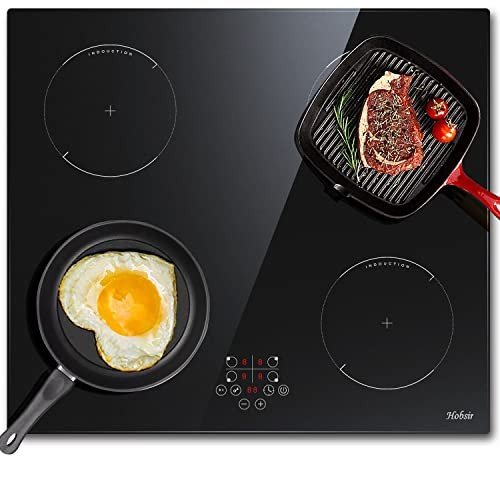The Complete Guide to Ovens and Hobs: Choosing the Right Appliances for Your Kitchen
When it concerns creating cooking work of arts, the importance of quality kitchen devices can not be overemphasized. Ovens and hobs are the heart of any kitchen, enabling home cooks and expert chefs alike to produce, bake, and sauté scrumptious meals. Comprehending the different types of ovens and hobs, along with their features and performances, is vital for making educated purchasing choices. This article uses a thorough take a look at ovens and hobs, helping you browse the choices available so that you can improve your kitchen's performance and adaptability.
Understanding Ovens
Ovens are vital for cooking and baking and can be found in various types to fulfill diverse cooking needs. Here is a summary of the most common types of ovens:
1. Standard Ovens
Conventional ovens work by warming the air inside with gas or electric elements. Ovens Online are best for baking cakes, roasting meats, and cooking casseroles.
2. Convection Ovens
These ovens utilize a fan to circulate hot air, supplying an even temperature level throughout, which can substantially decrease cooking times. They are ideal for baking cookies or roasting vegetables.
3. Microwave Ovens
Microwaves cook food rapidly utilizing electromagnetic radiation. They are best for reheating leftovers or thawing frozen foods but are not ideal for browning or crisping.
4. Wall Ovens
Integrating a wall oven into your kitchen style can save area and produce a sleek visual. They operate much like conventional or convection ovens however are built into the wall for simple access.
5. Variety Ovens
These ovens integrate stovetop burners with an oven, offering flexibility for those who choose a single home appliance for all cooking requirements.
| Type | Cooking Method | Best For |
|---|---|---|
| Traditional | Electric/Gas | Baking, roasting |
| Convection | Air blood circulation | Quick cooking, even baking |
| Microwave | Electromagnetic | Reheating, defrosting |
| Wall Ovens | Electric/Gas | Space-saving, sleek design |
| Range Ovens | Electric/Gas | Versatile cooking |
Checking out Hobs
Hobs, likewise referred to as cooktops or stovetops, provide the surface area to cook pans directly over a heat source. Like ovens, hobs can be found in various types, which can be classified as follows:
1. Gas Hobs
These hobs use a flame for cooking and supply instant heat control. They are preferred by lots of chefs for their responsiveness and accuracy.
2. Electric Hobs
Electric hobs use coils or flat surfaces to heat pans. Fan Oven Sales offer a constant heat source, but they may take longer to cool down compared to gas hobs.
3. Induction Hobs
Induction hobs use electromagnetic energy to heat pots and pans straight, making them highly efficient and faster to prepare. They are also much easier to clean as the surface area remains relatively cool.
4. Strong Plate Hobs
These are older innovation that uses solid metal plates to supply heat. They are durable however are less efficient than modern options.
| Type | Heat Source | Benefits | Drawbacks |
|---|---|---|---|
| Gas Hobs | Flame | Immediate heat control | Needs gas connection |
| Electric Hobs | Electric coils | Constant heat | Slower to cool off |
| Induction Hobs | Electromagnetic | Fast cooking, energy-efficient | Needs compatible cookware |
| Strong Plate Hobs | Strong metal plate | Durability | Less efficient |
Choosing the Right Appliances
Picking the perfect oven and hob for your kitchen involves thinking about different aspects:
1. Area and Layout
Measure your kitchen location to determine the size and placement of the oven and hob. Ensure there is sufficient ventilation, specifically for gas devices.
2. Cooking Style
Consider how often you cook and the type of meals you prepare. A stove might fit devoted bakers, while someone who often stir-fries may prefer an induction hob.
3. Energy Source
Pick the energy source that best fits your way of life. Gas offers instant control, while electric and induction hobs supply ease of use and are typically more energy-efficient.
4. Budget plan
Recognize your budget for kitchen appliances. Ovens and hobs differ substantially in cost, depending on features and brands. Prioritize vital features that satisfy your requirements.
5. Features
Try to find functionalities such as self-cleaning options, wise innovation compatibility, specific rack configurations for ovens, and safety functions for hobs.
Regularly Asked Questions (FAQs)
Q1: What is the difference in between a traditional oven and a convection oven?A1: Conventional ovens heat up the air inside without fans, while convection ovens make use of a fan to flow hot air for more even cooking. Q2: Can I utilize aluminum pots and pans on induction hobs?A2: No, induction hobs require ferrous (magnetic )products like cast iron or stainless steel to work efficiently. Q3: Do gas hobs heat quicker than electric hobs?A3: Yes, gas hobs provide instant heat, making them quicker for cooking compared to electric hobs. Q4: Is it safe to utilize a microwave oven?A4: Yes, when utilized according to the producer's instructions, microwave ovens are thought about safe for cooking.
Q5: How typically should I clean my oven and hob?A5: For optimal performance, clean your oven frequently, especially after spills. Hobs must be cleaned down after each usage
to prevent accumulation. Ovens and hobs
are indispensable parts of a well-equipped kitchen. Comprehending the numerous types, their performances, and the considerations associated with buying
them can dramatically improve cooking experiences. Whether one is a casual home cook or a professional chef, investing time in picking the best devices can cause cooking success and satisfaction in the kitchen. By focusing on functions that align with your cooking style, energy sources that fit your home, and spending plan factors to consider, you can produce an effective work space that inspires cooking creativity.

